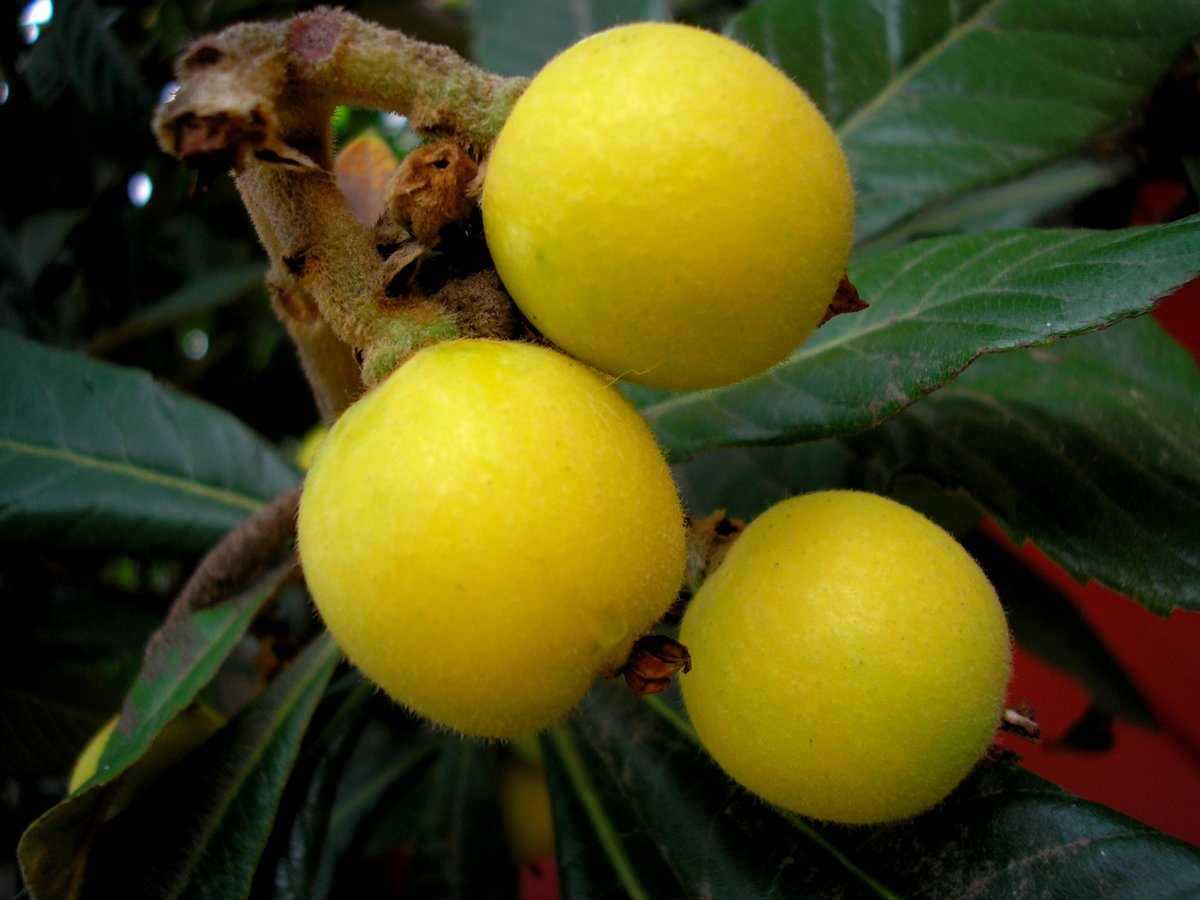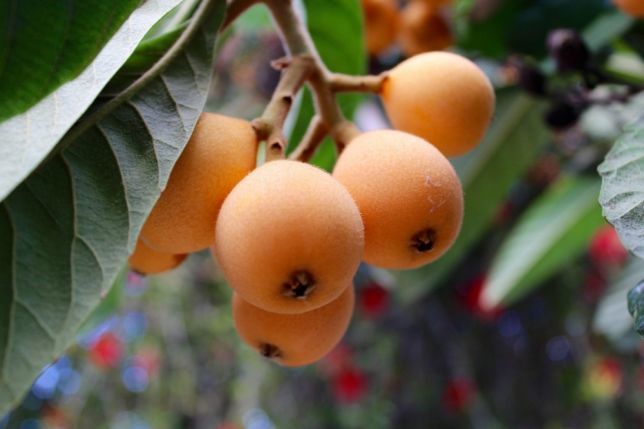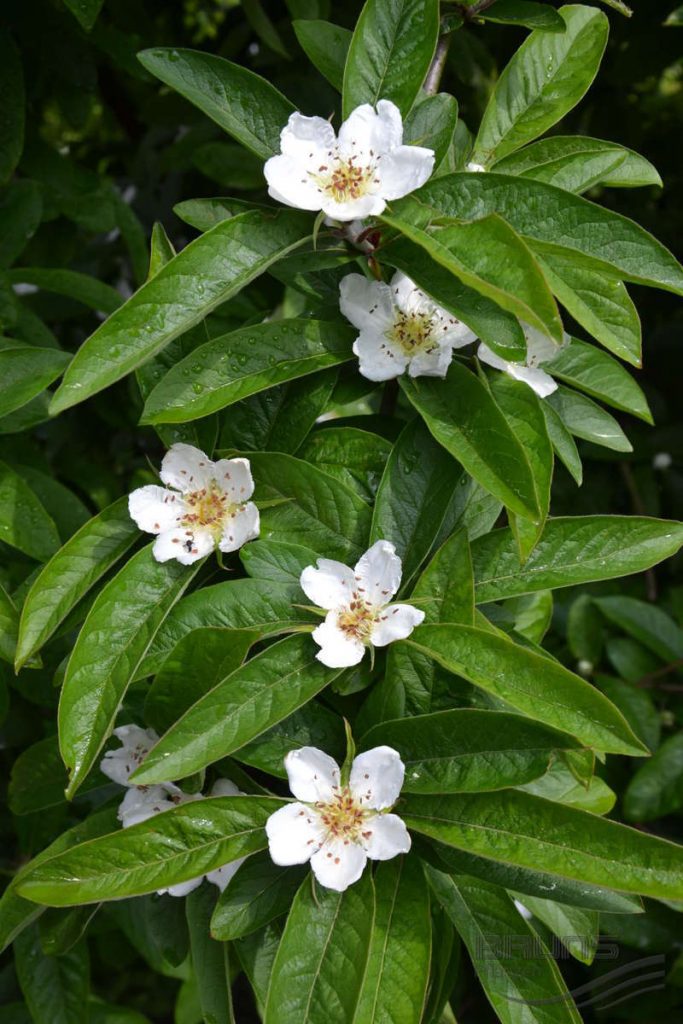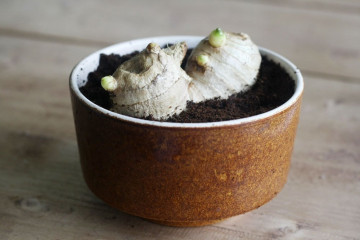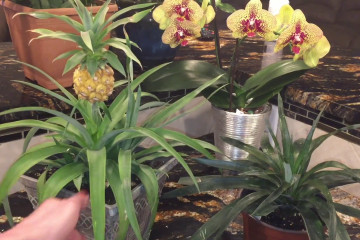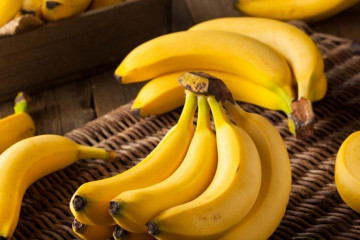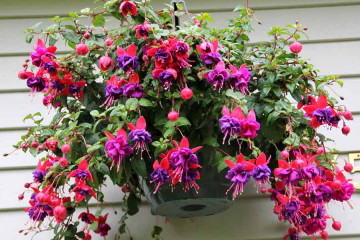Medlar - how to grow at home
Content:
Traveling around the world not only enrich with impressions of what you have seen, but also give you an acquaintance with exotic fruits of warm countries. Having tried and appreciated the unknown gifts of the southern gardens, you will also want to grow on your site something new, unusual to the surprise of neighbors and joy to the family.
Not so long ago, loquat began to appear in Russian supermarkets, which tourists feasted on in Turkey or elsewhere. Gardeners-enthusiasts were interested in: medlar fruit, what is it, is it possible to start growing a tropicana at home.
Despite the abundance of loquat species, only a few are suitable for growing at home. Two of them are widespread: Germanic and Japanese medlar. Plants differ significantly in appearance, only their fruits are similar.
The exotic fruit attracts amateur gardeners, they are interested in: how to grow medlar at home, which species to choose. To do this, you should familiarize yourself with its features, learn more about how the medlar grows, about the rules of planting, how to care for the medlar tree.
Types and varieties
About 30 species of medlar grow on the earth. So what does the mysterious medlar look like, which many have heard about, but have never seen?
It is a fruit plant from the Pink family of the Apple family. There are deciduous and evergreen forms. The area of growth is the subtropics of the south and southeast of Asia. It can be found on the Japanese islands and in Abkhazia.
The most popular are Germanic medlar, which is also called Caucasian, and Japanese - lokva. These species have learned to grow even in central Russia.
The names of the medlar, or muchmula, as they say in some countries, are assigned according to the place of growth:
- Abkhazian medlar in Abkhazia;
- Turkish - in Turkey, there it is called eni-dunya;
- Azerbaijani - in Azerbaijan.
Japanese lokva
It is an evergreen tree up to 8 meters high with large glossy oval leaves. In the wild, it is found in China and Japan.
Due to the high demands on the temperature and watering regime, difficulties arise when growing in open ground.
German eriobotria
The second name is ordinary ezgil. It was brought by the Greeks to the German lands. According to the place of growth, it received other names:
- Abkhazian;
- Crimean.
An ornamental plant up to 3 meters high, unpretentious. Resistant to frost. Feels good in areas with warm winters and cool summers.
The origin and description of the appearance of the Japanese medlar
More than a thousand years ago, the plant appeared in Japan, now it can be found throughout Asia, in the Middle East, on the American continent and in the Mediterranean.
Grows as an evergreen tree or shrub. Oval leaves up to 25 cm long, resemble walnut leaves, the outer side of which is glossy, the bottom - with a delicate downy.
Blooms in November-December. The flowers are small, up to 2 cm in diameter, with five snow-white or yellowish petals and yellow-green stamens, form inflorescences in the form of panicles. Withstand frost down to -5 ° С.
What kind of exotic fruit is this medlar? Can the fruit of the medlar be called a berry? The ovary appears on young shoots.Ripening occurs in April-May. Fruits of yellow or dim orange color, sweet with sourness, form clusters of 10-12 pieces. Juicy, with 1-6 large shiny seeds, taste similar to apricot or plum, some argue that they simultaneously resemble cherries, strawberries and pears. Weighing up to 100 g.
From fruits you can prepare:
- jam;
- marshmallow;
- jelly;
- wine.
Healthy fruits are best consumed fresh, they are rich in:
- vitamins (A, group B, C, E, K):
- microelements (iodine, magnesium, potassium, selenium, phosphorus).
Eating fruits will help get rid of intestinal diseases, normalize the stomach.
The origin and appearance of the Germanic or Crimean medlar
In the wild, it is found in the countries of Asia Minor, Iran, on the Balkan and Crimean peninsulas, in the Caucasus. It grows on the territory of the Caspian Sea region and in the Baltics.
A small, spreading tree with long, waxy, dark green leaves. In an adult specimen, the trunk is up to 15 cm in diameter, covered with cracked bark of a gray-brown hue. There are small thorns on the branches. The roots are powerful, they lie shallow from the surface of the earth. The decorative effect is created by spirally arranged leaves, which acquire a bright crimson color in autumn.
It blooms in early spring. The emerging flowers are white, after a while they acquire a pink tint, are located at the ends of the shoots, resemble apple trees in shape, exude an almond aroma.
The ovary is formed on the shoots of the last year, the fruits ripen in the fall. They are firm, similar to a large rosehip, with 5 seeds. They have a terracotta shade, round in shape, up to 5 cm in size. The skin is thick. They are not consumed fresh because of their astringency. After aging in the freezer, the palatability improves. It tastes like an apple with quince.
Transplanting medlar into open ground
The right time for transplanting is early spring or autumn, before frost appears.
Before planting, you must choose a place in the garden. It should be borne in mind that in places with a close occurrence of groundwater, the medlar will not grow. She is photophilous, but she feels good in shaded places, but the fruits will become smaller.
Optimal location
Medlar is undemanding to the type of soil, but neutral or slightly acidic is better suited to it.
An area with stagnant groundwater is also not suitable for planting a plant. A place with a groundwater level 1 m from the surface of the earth should not be chosen for planting. In addition, it is necessary to take into account the possible runoff and water level during rains.
Before planting, sod is removed from the selected area and a hole of the required size is dug.
Step-by-step planting process
Planting a seedling is easy. The sequence of landing operations:
- a drainage layer is laid in the prepared pit;
- make complex fertilizers with the addition of bone meal;
- a seedling is installed in the center of the pit;
- next to it, a support is driven in for fastening;
- watered;
- fall asleep with soil;
- tamp;
- mulch by adding a layer of compost or humus;
- attach the seedling to the support.
Reproduction
Medlar can be grafted onto hawthorn, quince or pear. For different species, medlar choose their own methods of reproduction, which is due to differences in features. The seed method is suitable for each of them. The soil is prepared from a mixture of sand, humus, turf and leafy earth in equal parts.
Cuttings
For grafting, use the branches of last year's growth.Cuttings 15 cm long with two developed nodes are cut. To exclude a lot of moisture evaporation, half of the leaves are removed from the bottom. Sections are treated with wood ash against rot and bacteria. Drainage is laid at the bottom of the pot, which serves as protection against stagnant water and root decay.
Prepared soil is poured. The stalk is installed vertically, deepening it by 4-5 cm and crushing the soil, watered well. Within 2-3 months, the root system appears. The stalk is ready for planting in a pot.
Growing medlar from a bone
How to grow an exotic medlar from a bone at home? This method is the longest in time - it will be possible to germinate the seeds only after a year. For this, fresh bones are used, extracted from the fetus before the start of the procedure.
Before sowing, the seeds are soaked in warm water for 24 hours. To determine the germination rate, those that have emerged are rejected, they are unsuitable for planting.
A drainage layer is laid on the bottom of the pots with drainage holes, prepared soil mixture is poured on top.
Selected high-quality seeds are planted one by one in pots with moistened soil to a depth of 2 cm. They are installed in a bright room with a temperature of 10ᵒC, covered with a film. The soil must be kept moist by watering 2-3 times a week.
In a month, the first sprouts will appear, which will have to be ventilated every day and condensation removed from the film, which can cause fungal diseases.
When the height of the seedlings reaches 2 cm, the film is removed and the containers are rearranged to a warmer place. In summer, seedlings can be taken out into the fresh air by placing them on a balcony or veranda. It is necessary to provide protection from drafts, wind and hot sunlight.
Layers
In the fall, an incision is made at the branch in the bark, treated with a root growth stimulator, tilted to the ground, and fastened with a bracket. Sprinkle with earth, moisturize and fertilize well.
After 2 years, the cutter has its own root system, and several new branches grow.
The cuttings are separated from the parent plant after the end of the leaf fall and transplanted into the place allotted for it. The grown specimen will begin to bear fruit in 3 or 5 years.
Medlar care
Medlar is a plant, the care of which is no different from caring for ordinary fruit trees.
To form the crown, pruning is used, in addition, there is a sanitary pruning, when it is required to remove dry and damaged branches.
In the spring, thinning pruning is performed so that the plant directs its forces to the formation of fruits.
To protect the medlar from insects that harm the plant, they are sprayed with insecticides. Spraying is carried out twice a season. This crop requires moderate watering and fairly frequent feeding.
Watering mode
Watering the plant in moderation, you need to ensure that waterlogging and stagnation of water in the near-trunk circle does not occur.
Top dressing
Seedlings and young trees require frequent feeding: 1 time in 3 weeks. For adults, 23 times a season is enough.
A mixture of mullein with organic fertilizers: peat, compost, bone meal is excellent for this purpose. The mixture is diluted with water in a ratio of 8: 1. Regular feeding is used to increase the yield.
Having familiarized yourself with what a medlar is, convinced of the high decorativeness of the plant, combined with the pleasant taste and benefits of its golden berries, armed with information about the methods of cultivation and care, you can dare to grow with your own hands an unusual exotic fruit that can decorate any home.
